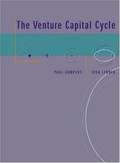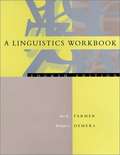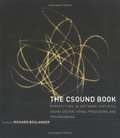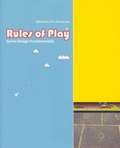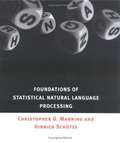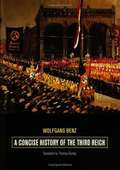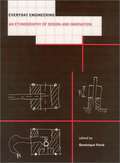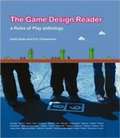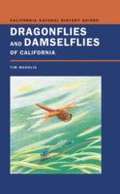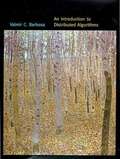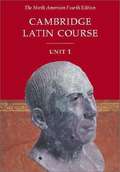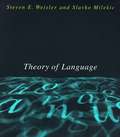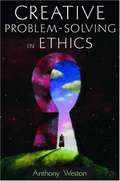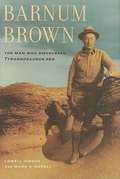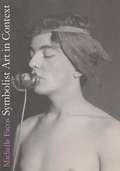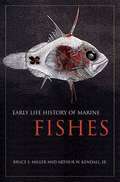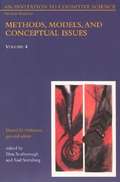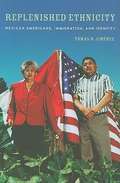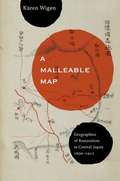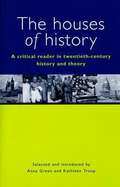- Table View
- List View
The Venture Capital Cycle (2nd edition)
by Paul A. Gompers Joshua LernerIn The Venture Capital Cycle, Paul Gompers and Josh Lerner correct widespread misperceptions about the nature and role of the venture capitalist and provide an accessible and comprehensive overview of the venture capital industry. Bringing together fifteen years of ground-breaking research into the form and function of venture capital firms, they examine the fund-raising, investing, and exit stages of venture capitalists. Three major themes run throughout the process: venture investors confront tremendous information and incentive problems; venture capital processes are inherently interrelated, and a complete understanding of the industry requires a full understanding of the venture cycle; and, unlike most financial markets, the venture capital industry adjusts very slowly to shifts in the demand for and the supply of investment capital. This second edition has been thoroughly revised in light of recent research findings, and includes six new chapters. The first part, on fund-raising, now includes a chapter that examines what determines the level of venture capital fund-raising and how tax policy influences the demand for venture capital. Three new chapters in the second part, on investing, examine what kind of distortions are introduced when the venture capital market goes dramatically up, a question prompted by the 1999-2000 market bubble; demonstrate that the venture capital industry does indeed spur innovation, an important determinant of economic growth; and examine whether and under what circumstances governments can be effective venture capitalists. Two new chapters in the third part, on exiting venture capital investments, discuss whether venture capital firms affiliated with investment-banks are prone to conflicts of interest with public offerings and how lockups on initial public offerings are used to limit conflicts of interest.
An Invitation to Cognitive Science, Volumes 1-3 (2nd edition)
by Edward E. Smith Daniel N. OshersonThe first three volumes of a four-volume introduction to contemporary cognitive science. The volumes are self-contained, and can be used individually in a variety of advanced undergraduate and graduate courses.
A Linguistics Workbook (4th edition)
by Ann K. FarmerIt is extremely important that students become familiar with the structural properties of languages other than English. In A Linguistics Workbook, therefore, we have provided exercises based on a wide variety of the world's languages.
The Csound Book: Perspectives in Software Synthesis, Sound Design, Signal Processing and Programming
by Richard BoulangerWritten by the world's leading educators, programmers, sound designers, and composers, this comprehensive guide covers both the basics of Csound and the theoretical and musical concepts necessary to use the program effectively.
Rules of Play: Game Design Fundamentals
by Katie Salen Eric ZimmermanAs active participants in game culture, the authors have written Rules of Play as a catalyst for innovation, filled with new concepts, strategies, and methodologies for creating and understanding games.
Foundations of Statistical Natural Language Processing
by Christopher D. Manning Hinrich SchutzeAs a comprehensive introduction to statistical natural language processing it contains all the theory and algorithms needed for building NLP tools and covers collocation finding, word sense disambiguation, probabilistic parsing, information retrieval, and other applications.
A Concise History of the Third Reich
by Wolfgang BenzThis highly accessible book at last gives general readers and students a compact, yet comprehensive and authoritative history of the twelve years of the Third Reich--from political takeover of January 30, 1933 to the German capitulation of May 1945.
Everyday Engineering: An Ethnography of Design and Innovation
by Dominique Vinck Eric BlancoEveryday Engineering was written to help future engineers understand what they are going to be doing in their everyday working lives, so that they can do their work more effectively and with a broader social vision. It will also give sociologists deeper insights into the sociotechnical world of engineering. The book consists of ethnographic studies in which the authors, all trained in both engineering and sociology, go into the field as participant-observers. The sites and types of engineering explored include mechanical design in manufacturing industries, instrument design, software debugging, environmental management within companies, and the implementation of a system for separating household waste. The book is organized in three parts. The first part introduces the complexity of technical practices. The second part enters the social and cultural worlds of designers to grasp their practices and motivations. The third part examines the role of writing practices and graphical representation. The epilogue uses the case studies to raise a series of questions about how objects can be taken into account in sociological analyses of human organizations.
The Game Design Reader: A Rules of Play Anthology
by Katie Salen Eric ZimmermanThe Game Design Reader is a one-of-a-kind collection on game design and criticism, from classic scholarly essays to cutting-edge case studies. A companion work to Katie Salen and Eric Zimmerman's textbook Rules of Play: Game Design Fundamentals, The Game Design Reader is a classroom source book, a reference for working game developers, and a great read for game fans and players.
Dragonflies and Damselflies of California
by Tim ManolisThis book introduces readers to California's dragonflies--where they live, how they can be identified, and what their habits are.
Adventures of Perception: Essays / Interviews
by Scott MacdonaldIn this collection of thematically related personal essays and conversations with filmmakers, the author takes us on a fascinating journey into many under-explored territories of cinema.
Visions of Japanese Modernity: Articulations of Cinema, Nation, and Spectatorship, 1895-1925
by Aaron GerowGerow explores the processes by which film was defined, transformed, and adapted during its first three decades in Japan. He focuses in particular on how one trend in criticism, the Pure Film Movement, changed not only the way films were made, but also how they were conceived.
An Introduction to Distributed Algorithms
by Valmir C. BarbosaAn Introduction to Distributed Algorithms takes up some of the main concepts and algorithms, ranging from basic to advanced techniques and applications, that underlie the programming of distributed-memory systems such as computer networks, networks of workstations, and multiprocessors. Written from the broad perspective of distributed-memory systems in general it includes topics such as algorithms for maximum flow, program debugging, and simulation that do not appear in more orthodox texts on distributed algorithms. Moving from fundamentals to advances and applications, ten chapters--with exercises and bibliographic notes--cover a variety of topics. These include models of distributed computation, information propagation, leader election, distributed snapshots, network synchronization, self- stability, termination detection, deadlock detection, graph algorithms, mutual exclusion, program debugging, and simulation. All of the algorithms are presented in a clear, template- based format for the description of message-passing computations among the nodes of a connected graph. Such a generic setting allows the treatment of problems originating from many different application areas. The main ideas and algorithms are described in a way that balances intuition and formal rigor--most are preceded by a general intuitive discussion and followed by formal statements as to correctness complexity or other properties.
Cambridge Latin Course, Unit 1
by Patricia E. Bell Stan Farrow Anne Shaw Peter Kesteven Joy Mellor Leslie Jones Stephanie M. Pope Neil Sutton Randy ThompsonThe Fourth Edition Cambridge Latin Course is an introductory program organized into four well-integrated units. Cambridge's proven approach includes a stimulating continuous story line, interwoven grammatical development and cultural information, supportive illustrations and photographs, and a complete Language Information section. Reading is the heart of the Cambridge Latin Course, and all the elements of the program - illustrations, vocabulary, grammar and syntax, cultural contexts and references, activities - are carefully introduced and arranged to provide students with the skills they need to read with comprehension and enjoyment from the very first page.
Theory of Language
by Steven E. Weisler Slavko MilekicIn this introductory-level linguistics text, Steven E. Weisler and Slavko Milekic develop a theoretically motivated analysis of language with an emphasis on grammar construction and argumentation. They introduce the theory of language, sounds, words, sentences, and meaning, as well as language and the brain.
Creative Problem-Solving In Ethics
by Anthony WestonA readable and insightful guide to ethical dilemmas.
Laws, Theories, and Patterns in Ecology
by Walter K. DoddsIntroductory material describes how the practice of science in general, and ecology specifically, yields theories and laws. Dodds also discusses why such ideas are only useful if they have predictive ability, and delineates the scope of these generalizations and the constraints that limit their application.
Nicole Brossard: Selections
by Nicole Brossard Jennifer MoxleyThis volume provides English-language readers with an overview of the life and work of Nicole Brossard, poet, novelist, and essayist, who is widely recognized in her native land and throughout the French-speaking world as one of the greatest writers of her generation.
Barnum Brown: The Man Who Discovered Tyrannosaurus Rex
by Lowell Dingus Mark A. NorellOne of the most famous scientists in the world during the middle of the twentieth century, Brown--who lived fast, dressed to the nines, gambled, drank, smoked, and was known as a ladies' man--became as legendary as the dinosaurs he uncovered.
Symbolist Art in Context
by Michelle FacosThis book offers a straightforward definition of Symbolism as the starting point for investigating a complex and imprecisely understood art movement based on two factors: authorial intention and aesthetic qualities.
Early Life History of Marine Fishes
by Bruce S. Miller Arthur W. KendallThe life cycles of fishes are complex and varied, and knowledge of the early life stages is important for understanding the biology, ecology, and evolution of fishes. In Early Life History of Marine Fishes,Bruce S. Miller and Arthur W. Kendall Jr. , bring together in a single reference much of the research available and its application to fishery science--knowledge increasingly important because, for most fishes, adult populations are determined at the earliest stages of life. Clear and well written, this book offers expert guidance on how to collect and analyze larval fish data and on how this information is interpreted by applied fish biologists and fisheries managers.
An Invitation to Cognitive Science, Volume 4 (2nd edition)
by Daniel N. OshersonThe 4th volume of the series, which covers Methods, Models, and Conceptual Issues.
Replenished Ethnicity: Mexican Americans, Immigration, and Identity
by Tomás R. JiménezThis book shows how the ethnic identity formation of later-generation Mexican Americans is shaped by ongoing immigration, while also considering the factors that other research has identified as central to the Mexican-origin experience: race, class, a history of colonization, the proximity of the border.
A Malleable Map: Geographies of Restoration in Central Japan, 1600-1912
by Karen WigenDrawing on a wide range of geographical documents from Shinano, Wigen argues that both the founder of the Tokugawa Shogunate (1600-1868) and the reformers of the Meiji era (1868-1912) recruited the classical map to serve the cause of administrative reform.
The Houses of History: A Critical Reader in Twentieth-century History and Theory
by Anna Green Kathleen TroupEvery piece of historical writing has a theoretical basis on which evidence is selected, filtered, and understood. This is as true of scientific empiricism as it is of poststructuralism. The Houses of History provides a comprehensive introduction to the twelve schools of thought which have had the greatest influence on the study of history in the twentieth century. Ranging from Empiricism to Postcolonialism, Marxism to the Ethnohistorians, each chapter begins with an introduction to the particular school, the main protagonists, the critics, and is followed by a useful section of further readings. From the classic, such as G.R. Elton's "England Under the Tudors" and E.P. Thompson's "The Making of the English Working Class," to the recent, such as Henrietta Whiteman's "White Buffalo Woman" and Judith Walkowitz's "City of Dreadful Delight," the diverse selections collected here bring together the leading historians and theorists of the century. Comprehensive and accessible to undergraduates,The Houses of History is ideally suited to classroom use.
